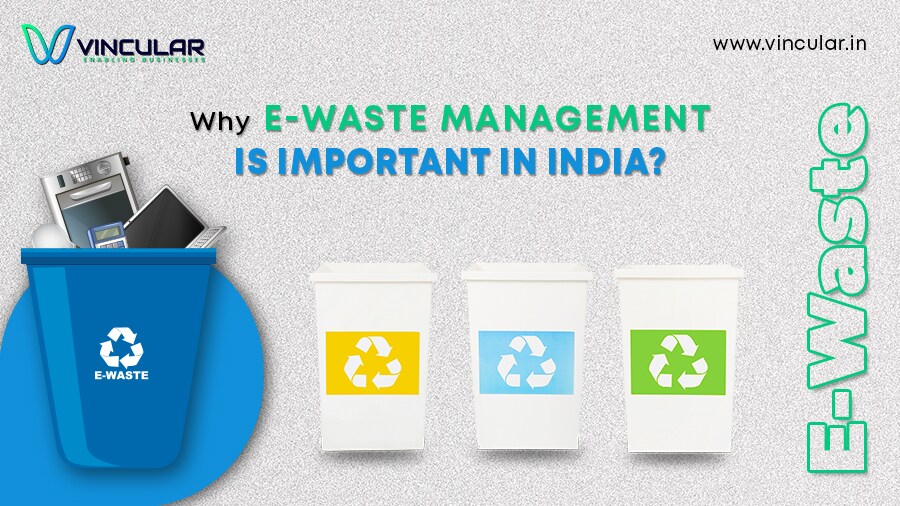Did you know that e-waste or electronic waste is the fastest-growing solid waste stream in the world?
In our modern digital era, electronic devices have become indispensable parts of our daily lives and we cannot imagine a day without them.
Over time, when these things get old or outdated, we replace them with new ones or throw them away in scrap without even thinking twice.
These relaxed decisions have given rise to an emerging concern known as E-waste, which has become a serious threat to human and environmental health.
So, to protect our ecosystem let’s start by understanding what is E-waste, its effects, how we can reduce it and so on.
What is E-waste?
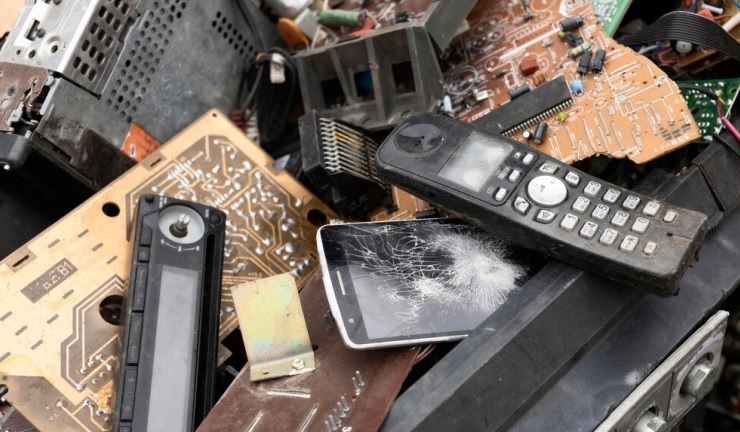
Electronic waste (e-waste) refers to all-electric or electronic items which are tossed out by their owner without the intent of re-use.
In other words, when electronic gadgets like computers, mobile phones, microwaves and so on get old or stop working, people often toss them out, and that’s what we call e-waste.
However, e-waste includes a wide range of products from any household to business items with circuitry or electrical components with power or battery supply.
But why electronic waste is a threat to our environment and humans let’s find out.
Why Electronic Waste is a Threat?
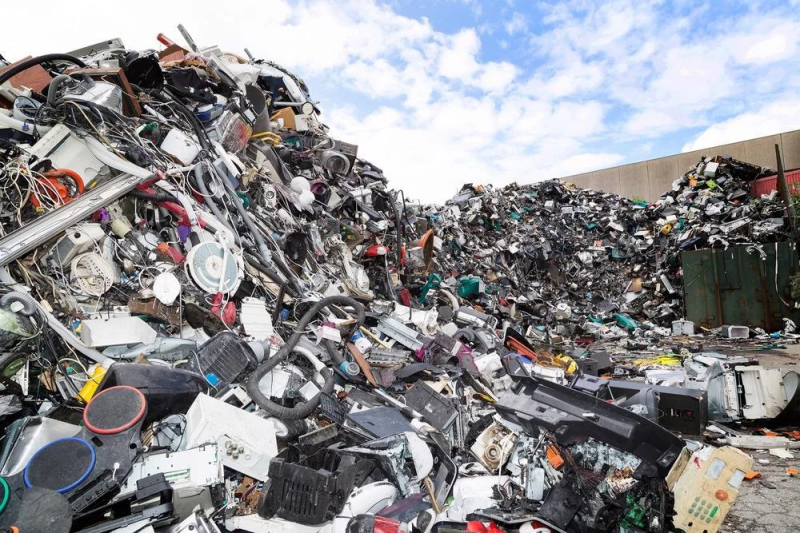
E-waste is a big problem because it contains toxic substances that can harm humans and the environment.
When we throw away old electronic devices like computers, phones, or TVs, these toxic materials can leak into the soil and water, polluting our environment.
When people or animals are exposed to these toxins, either by touching them or breathing them in, it can lead to health problems like cancer, birth defects, and damage to the nervous system.
Electronic waste also contributes to air pollution when it’s burned or broken down improperly, releasing harmful chemicals into the air we breathe.
E-waste is a big problem because it harms both people and the environment. When we throw away old electronics like phones, computers, and TVs, they often end up in landfills.
However, these devices contain toxic chemicals like lead, mercury, and cadmium. When they break down in landfills, these chemicals can leak into the soil and water, polluting our environment and harming plants, animals, and even people.
Moreover, electronic waste also contributes to global warming. When electronics are burned or left to decay, they release greenhouse gases like carbon dioxide into the atmosphere, which traps heat and contributes to climate change.
Additionally, many of the materials in electronics, like metals and plastics, are valuable resources that could be reused or recycled.
But when we don’t recycle them properly, we waste these resources and increase the demand for new ones, which leads to more mining and pollution.
So, electronic waste is a threat because it harms our health, pollutes the environment, and contributes to climate change.
That’s why it’s important to recycle our old electronics properly and reduce our electronic waste as much as possible instead of just throwing them away.
Initiatives to Manage E-waste Properly
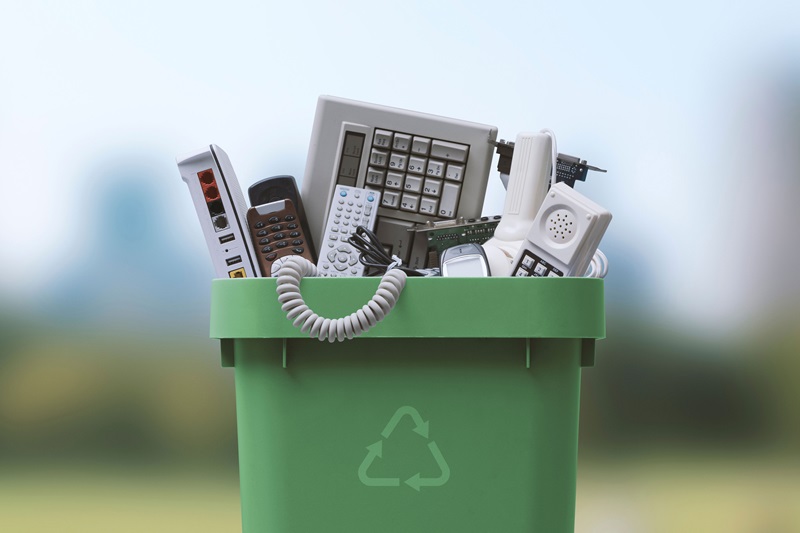
India is the third-largest e-waste generator in the world after China and the USA.
So, managing electronic waste properly in India is important because electronic waste can harm the environment and human health if not handled correctly.
Here are some initiatives India has taken to manage e-waste properly.
E-Waste Management Rules
The Indian government has introduced specific rules called the E-Waste (Management) Rules, which lay down guidelines for managing electronic waste.
These rules make it mandatory for electronic manufacturers to take responsibility for collecting and recycling their products once they become waste.
Extended Producer Responsibility (EPR)
This is a key part of the rules mentioned above.
EPR makes electronic manufacturers responsible for managing their products after they are discarded.
This means they have to set up collection centres and recycling facilities to ensure proper disposal of their products.
Setting up E-Waste Collection Centers
Various organizations and government bodies in India have set up collection centres where people can drop off their old electronic devices instead of throwing them away.
These centres ensure that electronic waste is collected properly and sent for recycling.
Awareness Campaigns
There are many awareness campaigns run by the government, NGOs, and other organizations to educate people about the importance of proper e-waste disposal.
These campaigns inform people about the harmful effects of electronic waste on the environment and encourage them to recycle their old electronics.
Recycling Facilities
To handle the growing amount of e-waste, India has been working on establishing more recycling facilities.
These facilities extract valuable materials from electronic waste and safely dispose of hazardous substances, reducing the environmental impact of electronic waste.
Some states in India offer incentives or rewards for individuals or businesses that recycle their electronic waste properly.
These incentives can include tax benefits or discounts on new electronic products.
Overall, these initiatives aim to tackle the problem of e-waste in India by promoting responsible disposal practices, increasing recycling rates, and minimizing the environmental and health hazards associated with improper e-waste management.
E-waste Management Rules in India
E-waste management in India is predominantly informal, with roughly 90% of collection and 70% of recycling handled by the informal sector.
The level of electronic waste is expected to grow due to cheaper phones and increased usage.
In November 2022, the Ministry of Environment and Forests notified the E-Waste (Management) Rules, 2022, (which came into force on April 1, 2023) to digitize the e-waste management process and provide more transparency in handling e-waste.
Provisions of the E-Waste (Management) Rules 2022
Here’s a simplified explanation of some key provisions:
- Extended Producer Responsibility (EPR): This means that companies that manufacture electronic products are responsible for managing the disposal and recycling of those products once they are no longer in use.
They need to set up collection centres and take back old products for recycling.
- Collection Targets: The rules set targets for collecting e-waste, which means that companies have to collect a certain percentage of the electronic products they sell every year for recycling or proper disposal.
- E-Waste Exchange: There’s a provision for setting up an online platform where producers, consumers, and recyclers can interact to facilitate the exchange, return, and recycling of e-waste.
- Deposit Scheme: There might be a deposit refund system where consumers pay a little extra when they buy electronic products, which they can get back when they return the product for recycling.
- Guidelines for Recyclers: The rules provide guidelines for recyclers to ensure that e-waste is processed safely and efficiently, without causing harm to human health or the environment.
- Penalties for Violations: There are penalties for non-compliance with these rules, which can include fines or other legal actions.
Key Points of E-waste Management Rules 2016
- Local bodies with a population of one lakh or above were supposed to establish solid waste processing facilities within two years.
- Census towns below a lakh would be given three years to establish solid waste processing facilities. Old and discarded dump sites would have to be shut down or bio-remedied within five years.
- The rules on solid waste management have been amended after 16 years.
- Garbage management is the responsibility of municipal bodies, they would have the right to charge user fees and levy spot fines for littering and non-segregation.
- A transition period of two to five years would be in place beyond which fines would be imposed as per the country’s Environment Minister.
Central Pollution Control Board Report
- Until 2013-14, municipal authorities established only 553 compost and vermin-compost plants, 56 bio-methanation plants, 22 refuse-derived fuel plants, and 12 waste-to-energy plants.
- By 2031, municipal solid waste is supposed to rise to 165 million tonnes and, if unprocessed, would require 1240 hectares of land for disposal.
Approximately 62 million tonnes of waste are generated annually in India, of which only 11.9 million are treated, and around half i.e., 31 million tonnes are dumped in landfill sites.
How to Reduce Electronic Waste?
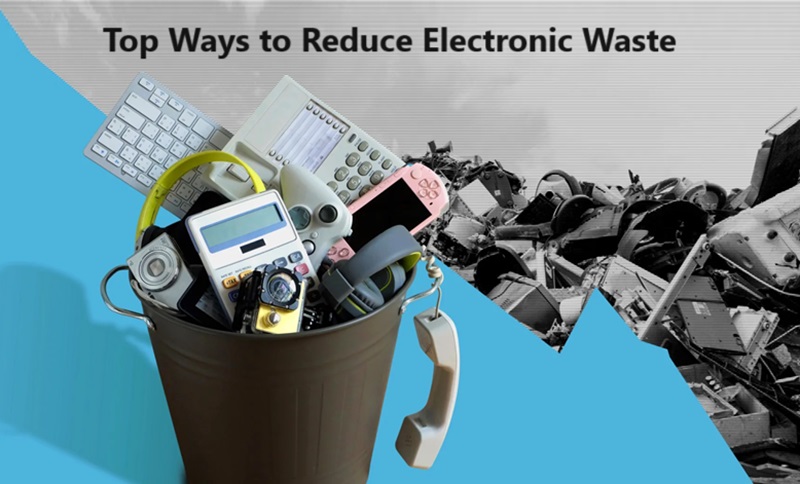
Reducing e-waste means finding ways to use electronics for longer and making sure they’re recycled properly when we’re done with them. Here’s how you can help:
- Instead of buying new gadgets often, try to use your current ones for as long as possible. Take care of them, update software, and fix any problems instead of throwing them away.
- If you don’t need your old electronics anymore, consider giving them to someone who can use them or selling them. This way, someone else gets to use them, and it reduces waste.
- When you’re finally done with your electronics, make sure to recycle them at authorized recycling centres. They can break down the materials and reuse them in new products.
- Instead of always buying brand-new electronics, consider buying refurbished ones. It gives a second life and reduces waste.
- Look for companies that have programs to recycle their products. Some companies will take back old devices when you’re done with them and recycle them responsibly.
How can India Work Towards Reducing and Recycling E-Waste More Effectively?
- Formalizing E-waste Collection: There is a need to create a comprehensive regulatory framework for e-waste collection, incorporating mandatory registration and licensing of collection centres and recyclers to formalize and standardize the process.
- E-Waste Tax Credits for Manufacturers: Implementing a tax credit system that provides incentives to electronics manufacturers for designing products with extended lifespans and repairability features. This approach aims to promote eco-friendly design practices while discouraging planned obsolescence.
- E-Waste ATMs: Installing E-Waste ATMs in public places, where individuals can deposit old electronic devices, and in return, receive small financial incentives or vouchers for public transportation or essential goods.
These ATMs could also feature educational displays to raise awareness about e-waste recycling.
How Vincular can Help you in Reducing E-waste?
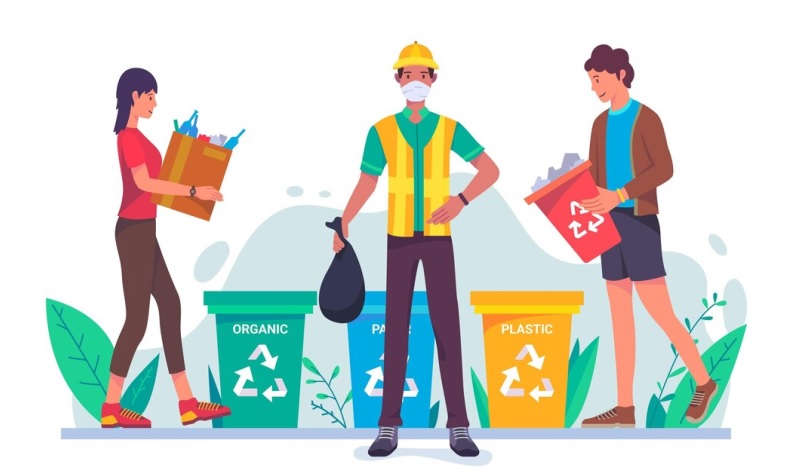
Vincular is a registered Producer Responsibility Organisation (PRO) by CPCB which can take the responsibility for managing e-waste on behalf of producer(s).
We handle the collection and disposal of electronic waste from products at the end of their life cycle.
Vincular also educates consumers and bulk consumers like schools and colleges about the importance of reducing, reusing, and recycling e-waste. This helps in promoting formal recycling and dismantling practices.
In simple terms, Vincular helps companies manage their electronic waste responsibly, ensuring it doesn’t harm the environment, and spreads awareness about recycling among consumers and bulk consumers.
Note: If you want to stay up-to-date with the latest notifications then subscribe to our WhatsApp channel or watch our publication space.

